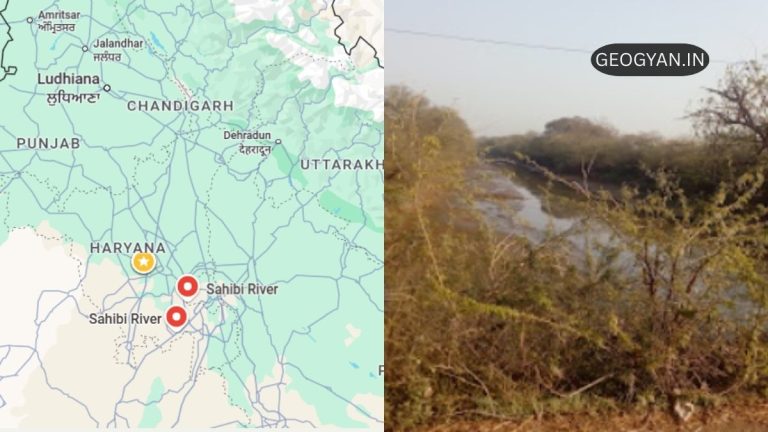Estimated reading time: 5 minutes
Remote sensing is often described as the “science and art of obtaining and interpreting information” (Jensen, 2006). However, it’s more accurate to say that remote sensing is a perfect blend of science, technology, and art.
The Science of Remote Sensing
Science involves acquiring knowledge through systematic methods and organized research. In remote sensing, this means using sophisticated sensors to measure electromagnetic energy from a distance. These measurements are then analyzed using mathematical and statistical algorithms to extract valuable information.
The Technology Behind Remote Sensing
Technology applies scientific principles to create new or improved tools and mechanisms. In remote sensing, technology involves the development of advanced sensors and data processing techniques. These innovations allow us to gather and analyze data more efficiently and accurately.
The Art of Remote Sensing
Art is about creatively arranging elements to influence the senses, emotions, and intellect. In remote sensing, the art comes into play when interpreting the data. Experienced analysts use their knowledge and intuition to make sense of the imagery, often achieving insights that automated systems cannot.
Combining Science, Technology, and Art
According to Jensen (2006), remote sensing is similar to mathematics in that it uses precise tools and techniques to gather data. However, the interpretation of this data requires a blend of scientific knowledge, technological tools, and artistic intuition. Analysts who excel in remote sensing often have a deep understanding of scientific principles, extensive real-world experience, and the ability to synthesize this knowledge to draw accurate conclusions.
The Human Element
While automatic image processing techniques have advanced, they still cannot match the human ability to perceive and interpret complex data. Human analysts bring their unique perspectives and experiences to the table, making them indispensable in the field of remote sensing.
In conclusion, remote sensing is a fascinating blend of science, technology, and art. The information extracted from remote sensing data can vary depending on the analyst’s skills and experience, and achieving 100% accuracy is often impossible. However, this blend of disciplines makes remote sensing a powerful tool for understanding our world.
Test Your Knowledge with MCQs
Q1: What is the primary definition of remote sensing?
(a) The art of obtaining information.
(b) The science of interpreting information.
(c) The technology used to gather data.
(d) The science and art of obtaining and interpreting information.
Q2: Which of the following is NOT a key component of remote sensing?
(a) Science
(b) Technology
(c) Art
(d) Philosophy
Q3: How does science contribute to remote sensing?
(a) By developing sensors.
(b) By interpreting data.
(c) By using systematic methods to acquire knowledge.
(d) By creating artistic representations of data.
Q4: What role does technology play in remote sensing?
(a) It helps in the creative interpretation of data.
(b) It involves the development of advanced sensors and data processing techniques.
(c) It focuses on the systematic acquisition of knowledge.
(d) It deals with the emotional and intellectual impact of data.
Q5: How is art involved in remote sensing?
(a) In the development of sensors.
(b) In the mathematical analysis of data.
(c) In the creative interpretation of data.
(d) In the systematic acquisition of knowledge.
Q6: According to Jensen (2006), what field is remote sensing similar to?
(a) Physics
(b) Chemistry
(c) Mathematics
(d) Biology
Q7: What is the role of human analysts in remote sensing?
(a) They develop advanced sensors.
(b) They create artistic representations of data.
(c) They bring unique perspectives and experiences to data interpretation.
(d) They focus on the mathematical analysis of data.
Q8: Can automatic image processing fully replace human analysts in remote sensing?
(a) Yes, it can completely replace human analysts.
(b) No, human analysts still play a crucial role.
(c) It depends on the specific application.
(d) Automatic image processing is not used in remote sensing.
Q9: What is the ideal level of accuracy achievable in remote sensing data interpretation?
(a) 100%
(b) 75%
(c) 50%
(d) It depends on various factors and cannot be universally quantified.
Q10: Which of the following best describes remote sensing?
(a) A purely scientific field.
(b) A purely technological field.
(c) A purely artistic field.
(d) A blend of science, technology, and art.
Answers:
- (d)
- (d)
- (c)
- (b)
- (c)
- (c)
- (c)
- (b)
- (d)
- (d)
FAQs
Remote sensing is the science and art of obtaining information about an object, area, or phenomenon through the analysis of data acquired by a device that is not in direct contact with the target. It involves using sensors to measure electromagnetic radiation reflected or emitted from the Earth’s surface, atmosphere, or objects of interest. This data is then processed and interpreted to extract meaningful insights.
Remote sensing technology has a wide range of applications across various fields. It is used in agriculture for crop monitoring, yield estimation, and soil analysis. In environmental science, it aids in monitoring deforestation, pollution, and climate change. It is also crucial in urban planning, disaster management, and natural resource exploration.
Advantages of remote sensing include its ability to cover large areas quickly, collect data in hazardous or inaccessible locations, and provide repetitive coverage over time. However, it also has limitations such as the cost of equipment, the need for skilled analysts, and the potential for data inaccuracies due to atmospheric interference or sensor limitations.





























